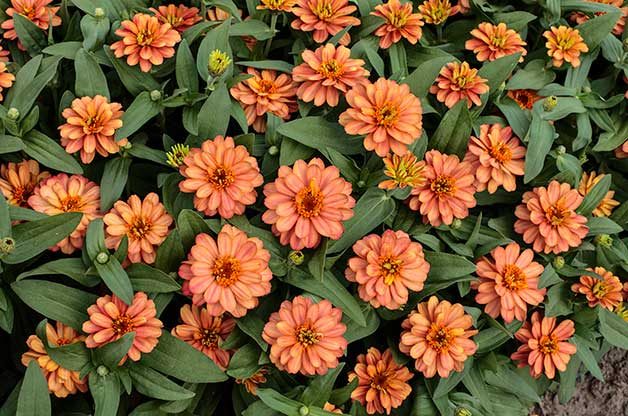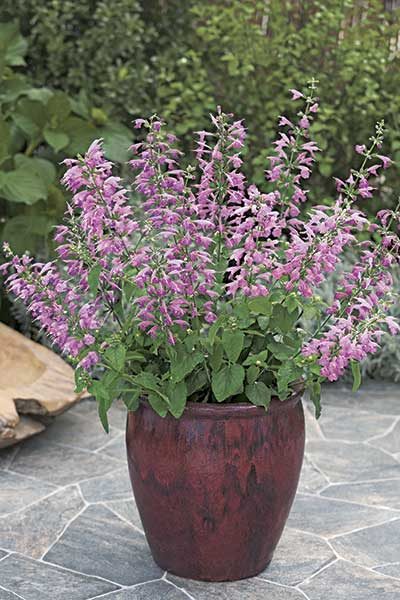How All-America Selections Designs New Plants
Updated: Feb. 27, 2024
Add a wow factor to your space with All-America Selections plants. These award-winners are designed, tried and tested to make your garden pop.

Think of your ideal plant. How would you describe it? Would it bloom sooner, yield more fruit, grow taller or stay shorter? Today, seed breeders have the tools and know-how to strive for botanic perfection, bringing out the full potential of any given variety. “It’s all about accumulating good genes for specific traits and then inbreeding until the variety is consistently uniform or true to type from seed,” says Paul Readly, seed breeder for American Takii Inc. in Salinas, California. His Summer Jewel Lavender salvia won a 2016 All-America Selections (AAS) award.
Because seeds can take up to 10 years to perfect, receiving the AAS designation is something Paul is very proud of. “AAS winners truly run the gantlet and emerge as superior plants for any garden in North America,” he says. The designation is considered the highest seal of garden performance approval in the United States.
How All-America Selections Plant Trials Work
The year of 1932 was a pivotal time for home gardeners, thanks to Ray Hastings, president of the Southern Seedsmen’s Association of Atlanta, Georgia. He felt strongly that there should be a reliable resource for garden-magazine editors and other members of the press to promote new vegetable and flower varieties. Seed companies responded favorably to his request to set up trial grounds for testing, and the nonprofit All-America Selections organization was born. Eighty-five years later, the AAS methodology remains true to its empirical roots.
From the broad temperature fluctuations of Maine to the predictably warm weather of Southern California, nearly 90 trial grounds across the country host AAS contenders. Entries are judged across four categories: edibles; ornamentals from seed; ornamentals from cuttings; and perennials. “Any breeding company or individual hobby breeder is eligible,” says Diane Blazek, executive director of AAS.
The process is handled like a scientific experiment. After an entry is submitted, “it goes to a Comparison Committee where other varieties currently on the market are selected as comparisons and used as controls,” Diane says. “Both the new entry and the control are sent to the judges for growing out over an average season.” The seeds are evaluated anonymously; score sheets are used to collect data; and an independent accounting firm computes the average results. “This way, each variety is judged solely on its own merits,” she says.

Judging the Plants
The judges—all professional horticulturists who work in the industry—are spread across the nation. “Some are breeders, some are seed buyers, some are from academia or public gardens,” Diane says. They operate on a volunteer basis, scoring the assigned entries for their region from 0 to 5. “We have a mathematical calculation that averages the scores across the country,” Diane says.
With more than 100 judges in total, Diane is confident that each plant has a fair test in multiple areas. “If an entry does not win a national award, we look at the regional scores to see if it performed better in one area,” she says. That would make it eligible to be named a regional winner.
Announcing the Winners
AAS winners are announced three times a year, in July, November and January. For Diane and her crew, the unveiling never gets old. “We get to trial new, never-before-sold plants and see which ones perform best in the garden. It’s very exciting to see.” Just don’t ask her to pick a favorite. “Oh my! That’s like picking a favorite child,” she says.
For her, the real rush comes when there’s a first-ever in class. “We recently had our first kohlrabi AAS winner, the Konan Kohlrabi,” she says. “We’ve never had a white pumpkin until 2016, and now we have the Super Moon.” She remembers the first strawberry (Delizz) the same year, and the first seedless watermelon, in 2013 (Harvest Moon). “I also get excited any time we have a series like the Summer Jewel salvias or Profusion zinnias,” Diane says.
Where to Buy All-America Selections Plants
Winning seeds are available for purchase almost immediately. Try seed catalogs, or check the AAS website for a list of seed companies that sell previous and current winners (all-americaselections.org).
As for future breeders, Paul knows that the novelty of the variety is among the first considerations before entering. “If it stops traffic and elicits a wow response, the variety is definitely a potential entry,” he says. If there’s a single trait all AAS winners share, it has gotta be the wow.
About the Expert
Diane Blazek is the executive director of All-America Selections (AAS), a non-profit organization that conducts impartial trials of new annual ornamentals, perennials and vegetables. Blazek assumed her current role in 2009, educating and inspiring consumers about gardening.




















